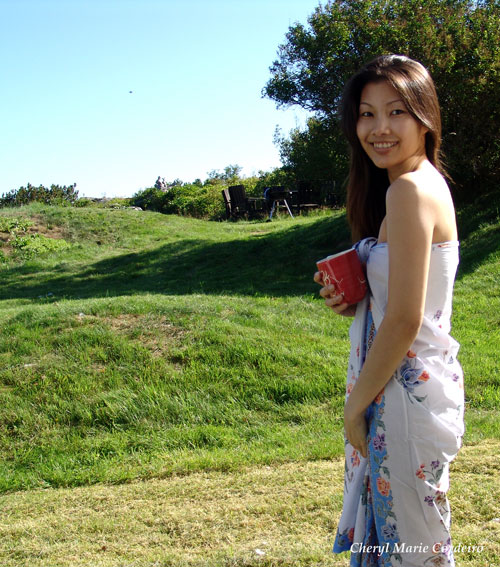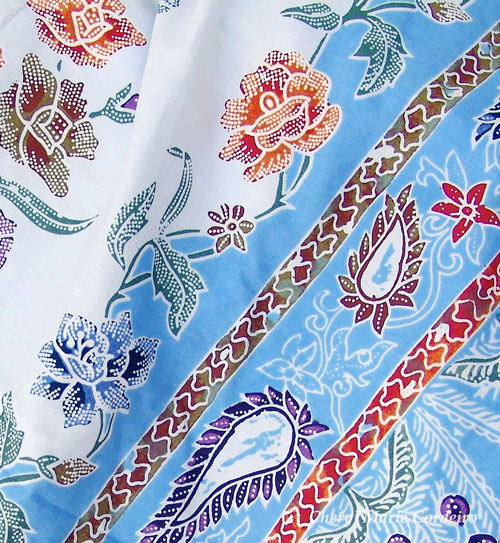
Having a morning cuppa in a light blue Terengganu, Malaysian made sarong.
The sarong as a garment is part of Singapore’s fashion heritage, where most ethnic groups in Singapore (the Malays, the Peranakans and the Indians) have in their basic wardrobe, a form of the sarong. Although sarongs are made in China, Japan and in Africa, the batik sarong in particular is intricately linked to Southeast-Asia and it has been a part of my wardrobe since I was a little girl.
Sarongs can be worn in a variety of ways, the most common would be to wear it tied around under the arms, as I have done in the picture above, or tied around the waist. The batik sarong is opaque in material, usually cotton but sometimes silk or linen and when tied around the waist, it can be coupled with a regular t-shirt (for home wear purposes) or with a hand-embroidered Nonya kebaya (for festive occasions).

The most popular themes for Malaysian made sarongs are leaves and floral motifs. This floral batik print on a light blue background has a spectrum of colours, from reds to greens.
Having visited a batik printing factory many years ago in Kelantan, Malaysia, I remember the batik printing process to be fairly time consuming and intricate in handicraft. An ancient art, the artisans in Malaysia are known for their hand-drawn designs, where they begin by penciling their design onto the outstretched fabric. A canting (a tool invented in Java, where Indonesian batik printing also make fine works of art) is then employed to apply hot wax over their designs in a skilled manner. I’ve also seen hot wax, which prevents colour from reaching the fabric, being applied with a brush. After waxing the fabric is dipped into a dye, dried and waxed again. This process of waxing and dying the fabric is repeated until all desired colours fill the design.
Apart from hand-drawn designs, stamps are also employed to turn out a more intricate and regular design on the fabric. The stamps, usually made of copper, are dipped in wax before stamping on to the fabric.
Malaysian batik can be distinguished from Indonesian batik in their design and colour palettes. In Malaysia, the center of batik making is in Kota Bahru, Kelantan, where you can find batik prints in a myriad of designs to match your heart’s desires. Travelling along the east coast of Malaysia to Pahang, Kuantan and Terengganu will also lend some opportunities to visit batik artisans at work.
There are many machine made batik prints these days, making it tricky to identify an authentic piece of handicraft. To distinguish an original batik piece, one that is hand-drawn and has gone through the waxing – dying process, turn the fabric over and inspect its underside. A hand-drawn batik will be equally vibrant on the underside as on the front. The designs will also be the same on front and back, in the hand-drawn batik.